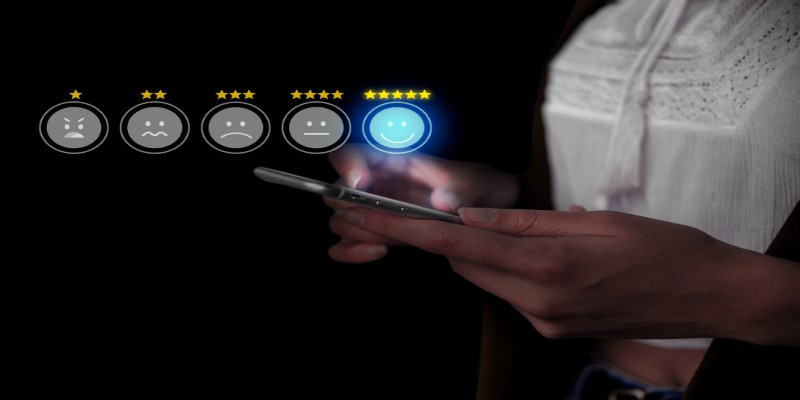Migraines can be a debilitating condition that significantly impacts daily life. Fortunately, technology offers several tools to help manage this challenge, particularly through migraine apps. These apps can assist in tracking symptoms, managing medication, and finding patterns that might trigger migraines.
However, with so many options available, it can be daunting to choose the right one. This article provides expert tips to help you select the most suitable migraine app for your needs in 2024, ensuring you find a tool that enhances your migraine management and improves your quality of life.
Before exploring migraine apps, it's essential to understand your personal needs. Different apps offer varying features, so identifying what you need will help narrow down your choices. Consider what aspects of migraine management are most critical for you.
Are you looking for an app to track symptoms and triggers, or do you need one that offers medication reminders and treatment plans? Understanding your requirements will help you select an app that fits your goals and preferences.
When selecting a migraine app, its important to consider several key features to ensure the app meets your needs effectively. Here's a detailed look at the most important aspects to evaluate:
One of the primary functions of a migraine app should be comprehensive symptom tracking. The app should allow you to log various details about your migraines, including their frequency, duration, intensity, and any accompanying symptoms such as nausea, visual disturbances, or sensitivity to light and sound. This feature is crucial for understanding your migraine patterns and identifying potential triggers.
A good symptom tracker will also let you record any over-the-counter or prescription medications you take, as well as non-medication treatments like relaxation techniques or lifestyle changes. Some apps even offer options to track additional factors such as weather conditions, sleep patterns, and dietary habits, which can help in identifying correlations with your migraines.
Medication management features are another important aspect to consider. Look for apps that offer medication reminders to help you stay on track with your prescribed treatments. This can be particularly useful if you take multiple medications or have a complex treatment regimen.

Additionally, some apps provide insights into how different medications affect your migraine patterns. They might include features that allow you to log the effectiveness of each medication and any side effects you experience. This data can be valuable for discussing treatment options with your healthcare provider.
Customization can greatly enhance the usefulness of a migraine app. Different individuals may have unique migraine triggers or symptoms, so an app that allows for personalization can be beneficial. Look for apps that let you customize the tracking fields, input specific triggers, and adjust the settings to match your individual needs.
Some apps offer advanced features, such as the ability to set personalized alerts for tracking patterns or for medication adherence. These customizable features can help ensure that the app aligns with your specific migraine management strategy.
Given the sensitive nature of health data, data security and privacy should be a top priority. Ensure that the app follows robust security protocols to protect your personal information. Look for apps that are transparent about their data handling practices and comply with relevant regulations, such as the Health Insurance Portability Act (HIPAA) in the U.S.
Check the app's privacy policy to understand how your data will be used and whether it will be shared with third parties. Opt for apps that offer strong privacy controls and allow you to manage your data-sharing preferences.
Some migraine apps offer features that facilitate communication with healthcare providers. For instance, certain apps allow you to share your migraine logs and data directly with your doctor, which can streamline consultations and treatment adjustments. If this is a feature you value, look for apps that provide easy options for sharing your data with your healthcare team.
The cost of migraine apps can vary widely, from free versions with basic features to premium versions with advanced functionalities. Evaluate whether the app offers a free trial or a freemium model that allows you to access essential features before committing to a paid version. Consider whether the cost aligns with the app's benefits and your budget. Keep in mind that while a higher price doesnt always guarantee a better app, some features may justify a higher cost if they significantly enhance your migraine management.

User reviews and ratings can provide valuable insights into an app's performance and reliability. Check app stores and online forums for reviews from other users who have similar needs. Pay attention to feedback regarding the app's functionality, ease of use, and effectiveness in managing migraines. While individual experiences can vary, a pattern of positive or negative reviews can help guide your decision.
The level of support and frequency of updates can also impact your experience with a migraine app. An app with responsive customer support can address any issues or questions you may have. Additionally, regular updates can ensure that the app remains compatible with the latest devices and operating systems and that it continues to improve its features and security.
Choosing the right migraine app involves evaluating various factors to ensure it meets your specific needs and preferences. By considering features such as symptom tracking, medication management, user experience, privacy, and cost, you can select an app that enhances your migraine management and supports your overall well-being.
Keep in mind that the best app for you is one that aligns with your requirements and provides reliable tools for tracking and managing your migraines. With careful consideration and research, you can find a migraine app that makes a meaningful difference in your daily life.

By Verna Wesley/Sep 24, 2024

By Celia Kreitner/Sep 24, 2024

By Madison Evans/Sep 22, 2024
By Korin Kashtan/Sep 17, 2024

By Triston Martin/Sep 06, 2024

By Darnell Malan/Sep 24, 2024

By Georgia Vincent/Sep 24, 2024

By Noa Ensign/Sep 22, 2024

By Pamela Andrew/Aug 24, 2024
By Alison Perry/Sep 17, 2024

By Sid Leonard/Oct 29, 2024

By Susan Kelly/Sep 06, 2024